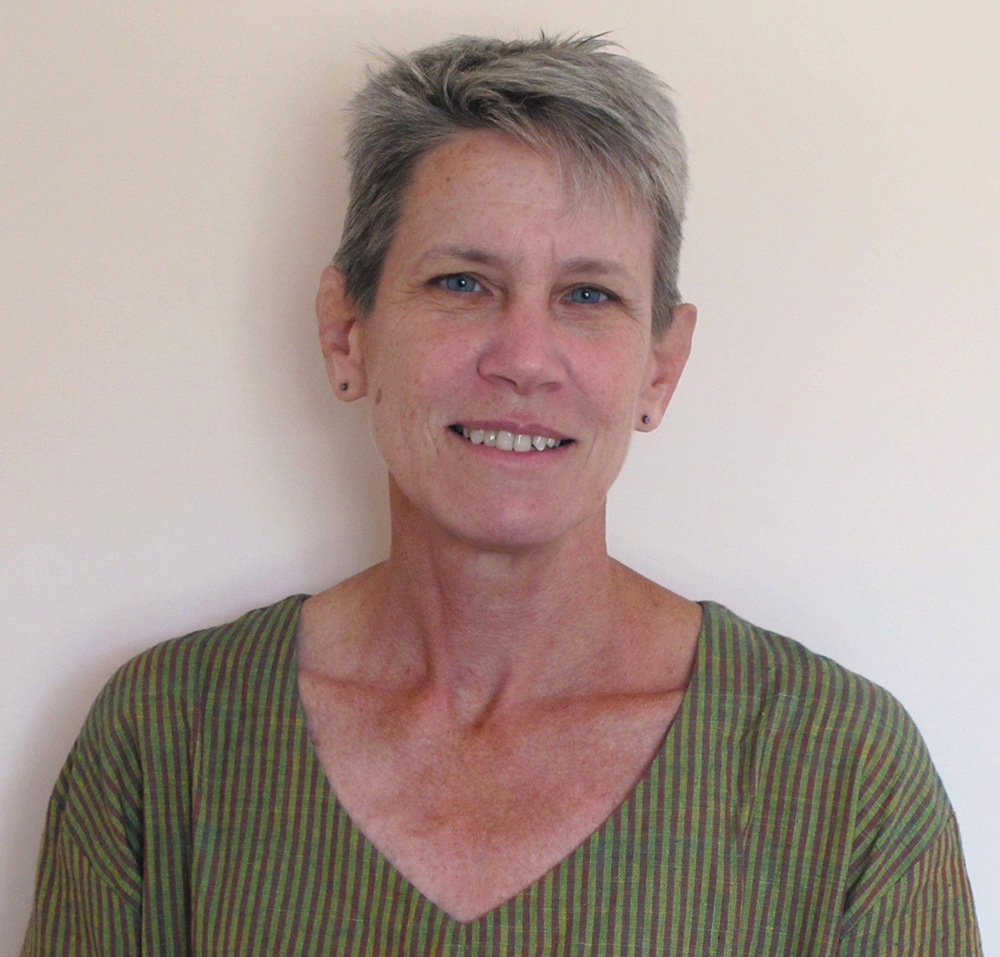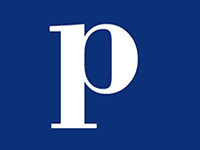
Kathryn Myers, a painter and professor of art at the University of Connecticut, has exhibited her paintings widely in the United States and India. An exhibition of photographs by Myers, and Dinesh Khanna — titled “Reciprocation” — is currently on at the Art and Aesthetic gallery in New Delhi. The show, which brings together the two photographers for the first time, showcasing their works “in response to each other’s creative interests,” is on till January 11, 2017.
Excerpts from an interview with The Punch.
THE PUNCH: Tell us something about your works that are part of the show, “Reciprocation”. How do they respond to the insider-outsider discourse?
KATHRYN MYERS: The title was based on my sense of connection with Dinesh Khanna, who first encouraged me to consider my photographs as a legitimate part of my creative process, for which I started creating a few series of works. Then we decided to pair bodies of work that had a connection with colour or with the city of Varansi where I first met and interviewed him for my video series. I don’t feel much like an outsider anymore as I’ve been coming to India regularly since 1999, in the last few years, twice a year. But I guess in the sense that often someone from outside notices things that those seeing the same thing all of the time might not notice. In general, I’m attracted to the same kind of thing wherever I go. I love vernacular architecture and worn and abraded surfaces, but one day in Varanasi, I noticed the frequency of the combination of pink and green, (complimentary colours, thus the title of the series) and started that series. Maybe also because I know that every tourist or visitor to Varanasi photographs the ghats (I have hundreds myself and a video) that the small back alleyways interested me more as photographs than scenes of the ghats. It’s like the door to Alice in Wonderland back in those lanes and the sense of constriction is such contrast to the openness of the ghats. As an outsider, I’m also sensitive about exoticising others, so I tend to stay away from figurative imagery these days. But also, and this figures more into my paintings than the photos, if a figure is in a space, the narrative becomes about that relationship, if the space is depicted itself, then it becomes the viewer’s space. Because I’ve been coming to and feeling deeply connected to India for so long, I no longer felt I wanted to depict people in their spaces, but to own sense of myself inhabiting these spaces.
THE PUNCH: As a photographer and as an artist, how do you engage with “objective reality”? How important is this engagement for your art?
KATHRYN MYERS: My early work was more invented narrative, so I was always projecting myself into it, making interpretations based on making the unfamiliar familiar, but now I feel a more formalist response which is I guess more objective. The photographs are certainly more objective because they are presented as found and selected, where my paintings start with objective information but go through a series of technical and conceptual translations.
THE PUNCH: In your series of photographs, opposites — darkness and light, the mundane and the profound — and colours and forms are often seen to be juxtaposed. How do you approach a frame? How important is form to you?
KATHRYN MYERS: Form and light is where it starts for me, structure and composition, but of course something has to grab me to inspire me to frame a particular scene, and there is often a magic to that, it might be very unexpected. I primarily go out to shoot reference images for my paintings, that’s my first instinct which is not about composing at all but about information. I put all sorts of bits and pieces together to make my paintings but there might be a master reference, always architectural. I have several different series of photos on my website. The Canal was about the sense of formal beauty in trash or reflections in a dirty canal, so that might be about opposites, but it was at first a formal response to shape, form, light, though never totally abstract.
THE PUNCH: In Varanasi Passage, you chronicle spaces as passages of time, movement and transformation etc. Do you consciously set out to capture the underlying geometry of an image?
KATHRYN MYERS: I saw those spaces as small jewel boxes and although the amount of rich information would have made wonderful large photos, I saw them more as the intimacy of a miniature painting or a Joseph Cornell box. How those spaces compose themselves is about how the space itself is constructed so efficiently for a small space, and of course, the use of colour to attract customers probably. But I see it often in passing so many small shops along the road, carpentry or welding shops, these tiny containers of such rich information. I can’t wait to get to Parry’s Corner in Chennai where I’ll be going soon. I’ve made a lot of similar imagery there, but not with the same sense of “photographic consciousness” that I would make them with now. But I tended not to think of the photos as a serious part of my creative practice until Dinesh’s encouragement, which is why the show is titled “Reciprocation”.
THE PUNCH: Tell us about your interest in Indian contemporary art. How did “Regarding India”, your series of conversations with Indian artists, happen?
KATHRYN MYERS: I first became aware of the contemporary art scene because I heard of Peter Nagy, who is incidentally from Connecticut, but lived in India for decades and started Nature Morte gallery which is still going strong. I visited him in 1999 on my first trip to India when I had a residency at Sanskriti Kendra. In those early days, it was not easy to find the galleries. But when I returned to the US, Bose Pacia was open in New York and so I think I learned a lot about contemporary art through some of the new Indian art galleries in New York and there was a community of artists, Indian and western, that were excited about Indian art and went to the openings. Then I started teaching a class on Indian art after curating a large show at our university museum. After teaching the class for a few years, I thought what was missing was the artists speaking themselves, being an artist, I know artists talk about their work differently than historians or critics, and that turned out to be true. My students love the videos. I could also ask direct questions in the videos that I thought my students, who have little if any knowledge about India, would find helpful. I interviewed over 60 artists, but the video editing process is much more tedious than I realised, so I’ve only edited about 20 so far.

Complimentary, Jharkhand, 2013
THE PUNCH: What fascinates you most about India each time you visit the country? Have the terms and shape of your engagement and understanding of India and its diversity changed over the years?
KATHRYN MYERS: There is always a “vibe” to a place that is impossible to really describe, and I feel it in India the moment I get off the plane, and I long for it when I’m not here but I know living here all the time would spoil that. I almost feel that if I come too often that will be gone someday to familiarity. But that doesn’t mean I’ll want to deprive myself of coming often, so much changes so quickly that it’s better to get used to it gradually than have to make major adjustments. And each part of India has a different vibe, that was maybe more apparent to me during my first visit to India when I moved from Ahmedabad to Mumbai to Goa to Kochin, then all over Rajasthan and finally to Varanasi in very quick sequence. Though there were similarities, each place was so different and felt so different.
I used to travel a lot more and so I miss that sense of adventure, I love night trains, but no longer seem to have time for that kind of slow travel. But it’s been replaced with a feeling of being “home” through friends I visit in different parts of India — Baroda, Ahmedabad, Varanasi, Goa. I’ve had a lot of amazing trips north and south, often travelling with friends that makes it a bit easier, particularly when hiring cars for a long temple trip south, or to Ladakh, Himachal Pradesh or Sikkim. With each friend I travel with, I experience India differently, say if they are more interested in adventure, seeing mountains, are into Indian spirituality or contemporary art. A few years ago, I had a great road trip with my friend Pradosh from Varanasi to Bhubaneswar and onto Puri, I’d love to do that again. (Maybe he will even let me drive the next time!) This summer, I think I’ll be travelling with a friend to Assam with a friend from the US as she is interested in researching tea plantations. But in the past few years, I’ve liked hanging out in Delhi, just being around to visit friends and go to events more casually, to visit studios. I’ve been sharing a barsati with my friend Maya Kovaksya, who lives in Beijing, and that’s been a very different way of being here. (As it turns out, it’s not easy to maintain a place when you are not here very often so we will be giving that up,) but I have a lot of friends in Delhi and with Airb&b there are countless interesting places to stay and each time you discover a new neighborhood, I love just roaming around. I’ve loved being in Jangpura, I don’t feel like a tourist here like I did when I used to stay in Paharganj.
I’ve appreciated seeing the immense changes in the years I’ve been here but there is a lot I miss also. I can’t imagine Delhi now without the metro, but during my first trip I used to take the bus every day from Sanskriti Kendra to Connaught place just to go to an internet café, I can’t imagine doing that now!
Page
Donate Now
Comments
*Comments will be moderated













